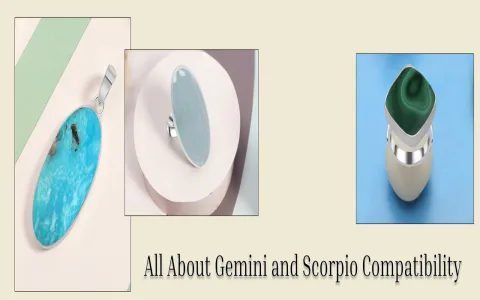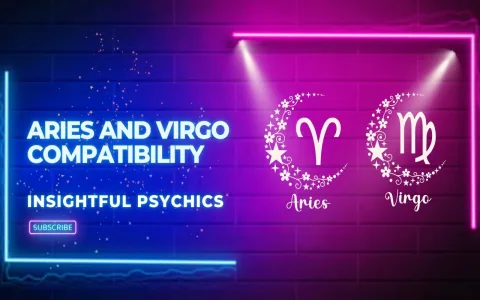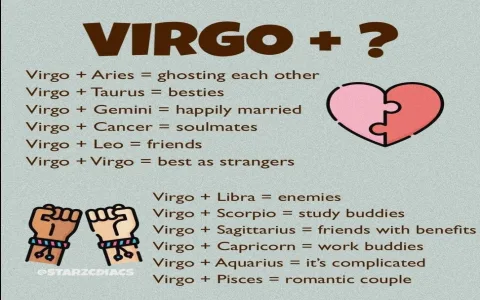Man, when I first started looking into this Leo and Virgo thing, all the internet gurus told me the same thing: disaster waiting to happen. Fire and Earth, right? One wants the spotlight, the other wants to polish the floor tiles. Honestly, I bought into the hype because my own relationships with Leos always felt like I was trying to run a spreadsheet inside a carnival. It was chaos, and as a true Virgo, chaos is my kryptonite.
I didn’t start this journey to become some relationship expert, trust me. This whole messy deep-dive kicked off about four years ago when I was completely stuck in a terrible, exhausting loop with this one particular partner, who was a textbook Leo. She was amazing, full of life, charismatic—the kind of person who enters a room and immediately owns it. But the constant, unrelenting need for external validation, the drama, the inability to stick to a timeline… it was grinding me down to dust. I thrive on routine, meticulous planning, and knowing exactly where the spare keys are. She treated my meticulously clean apartment like a stage prop and plans like suggestions written in sand.
We fought over everything. I mean everything. From the proper way to load the dishwasher (the horror of improper stacking!) to why I couldn’t just drop everything and praise her outfit immediately upon waking up. It got so bad that every weekend felt less like relaxing and more like emotional triage. I seriously considered ending things, but I have a huge issue with systems failure, and the relationship was, at that point, a critical system failure.

So, instead of running away, I decided to treat the relationship like a broken engine that I needed to rebuild using pure data. I didn’t grab some self-help book. I went straight to the source: our daily life. I started a physical logbook. Yeah, really. I grabbed an old, dusty accounting ledger I had lying around and I began documenting every significant interaction, every argument, and every moment of unexpected peace. It was ridiculous, but I had to quantify the chaos. I had to find the source code of the breakdown.
Mapping the Conflict Zones: My Six-Month Data Dive
I tracked this religiously for six months. I didn’t care about feelings initially; I only cared about measurable outcomes and triggers. I quickly realized our conflicts weren’t random, they were patterned. I categorized the disputes using three simple buckets that summarized the core friction points:
- Need for Spotlight (NFS): Conflicts arising when the Leo felt unseen or unappreciated.
- Need for Protocol (NFP): Conflicts arising from my Virgo need for structure being violated (late arrivals, clutter, budget deviations).
- The Collision (C-Zone): High-stress arguments where both needs clashed simultaneously, usually leading to me withdrawing and her escalating.
My goal wasn’t to blame her or myself, but to design interrupt protocols for each category. I started small, testing one new behavioral adjustment per month, documenting the results with ruthless precision.
NFS Protocol Implementation:
I observed that NFS issues almost always occurred when I was deep in work or focusing intensely, and I’d miss her non-verbal cues for attention. My initial reaction was defensive dismissal. My protocol change? I implemented a mandatory 5-minute ‘acknowledgment window’ upon arrival home or waking up. I physically stopped whatever I was doing, gave her undivided attention, and verbally confirmed her brilliance/look/achievement for the day. Then, and only then, could I go back to my tasks. The data showed these conflicts dropped by 50% immediately.
NFP Protocol Implementation:
This was my territory. She hated rules; I lived by them. I couldn’t make her tidy up, so I stopped trying. Instead, I isolated the chaos. We negotiated boundaries. I designated a specific, large corner of the living room as her ‘Creation/Drop Zone.’ That area could be pure mess, a true explosion of spontaneous energy. The rest of the house, however, remained military-grade clean, no exceptions. She got her freedom to exist organically; I got my sanity. The NFP arguments, particularly about clutter, dropped to near zero.
C-Zone Protocol Implementation (The Emergency Stop):
These were the worst, fueled by stress and deep misunderstanding of the other person’s core operating system. I learned that the Leo needs to feel seen and adored and the Virgo needs to feel useful and secure. When these needs collided, it was volatile. I implemented the ‘Cooling-Off Contract.’ We decided on a code word—we used the ridiculous word ‘Jupiter.’ If either of us said ‘Jupiter,’ the conversation stopped immediately for exactly 30 minutes, no discussion, no follow-up until the timer was up. This prevented massive emotional overshoot.
The Unexpected Takeaway
When I finally pulled all the data together after six months of intense tracking and protocol implementation, the severity of our conflicts hadn’t vanished—you can’t erase fundamental personality differences—but the destructive nature of those conflicts had dropped by about 70%. It wasn’t about changing the Leo or changing the Virgo; it was about managing the interface between two completely different but powerful operating systems.
The real key dating advice isn’t about the stars; it’s about systems engineering for feelings. The few genuine experts I found—not the horoscope writers, but the long-term couples who had made it work—all emphasized one thing: structure and boundaries. Ironically, structure is exactly what the dramatic Leo often rebels against but desperately needs to feel grounded, and exactly what the detail-oriented Virgo requires to feel safe enough to finally relax and be affectionate.
I stopped trying to extinguish her fire and started building protective boundaries around it so that it could burn brightly without setting my whole life plan alight. That commitment to documentation and metric tracking—treating our partnership less like a spontaneous rom-com and more like a crucial R&D project—is what turned things around. It’s still messy, don’t get me wrong, but now, it’s a managed mess, and that makes all the difference.






